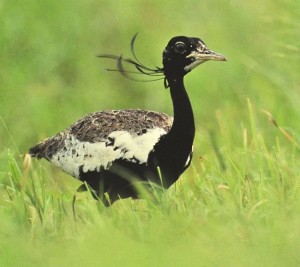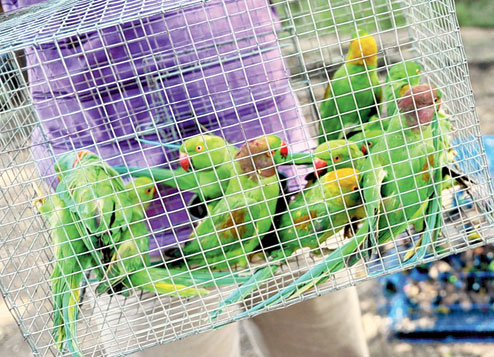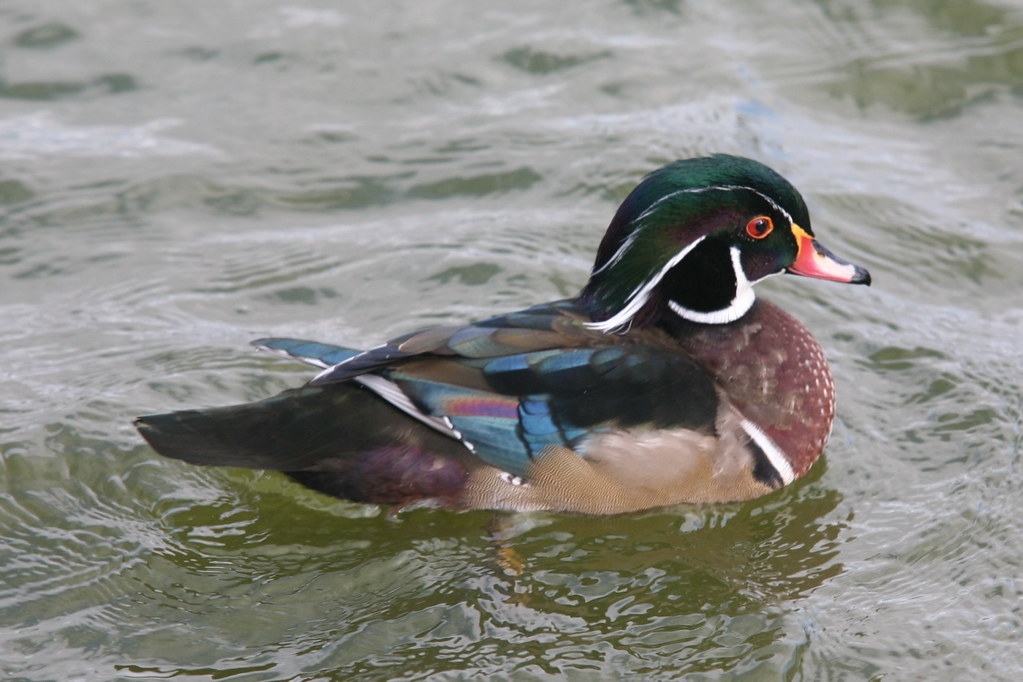 The Lesser Florican is one of the smallest bustards of the world and bird that prefers to live in grasslands. But latest census by the Wildlife Institute of India (WII) sadly predicts that the birds are losing their home as well as their numbers in the country. From 238 of these birds recorded in 1999 in Gujarat, Rajasthan and Madhya Pradesh the number has dropped to merely 84.
The Lesser Florican is one of the smallest bustards of the world and bird that prefers to live in grasslands. But latest census by the Wildlife Institute of India (WII) sadly predicts that the birds are losing their home as well as their numbers in the country. From 238 of these birds recorded in 1999 in Gujarat, Rajasthan and Madhya Pradesh the number has dropped to merely 84.
In the last 10 years there has been a drastic 65 percent reduction in the population of the bird Lesser Floricans. Compared to 1999 when the number of birds recorded in the three states was, Gujarat – 141, Madhya Pradesh – 63, Rajasthan – 34, the 2010 survey shows a drastic decline. According to the current status the bird numbers are, Gujarat – 54, Madhya Pradesh- 12, and Rajasthan – 18.
“The last systematic survey of this species was conducted by late Ravi Sankaran, an eminent ornithologist, in 1999. This study has been undertaken with an aim to update the status of the Lesser Florican and its habitat in North-Western India (Gujarat, Rajasthan, Madhya Pradesh) as recorded earlier by Sankaran,” one of the researchers at WII, G S Bhardwaj said.
But Bharadwaj added that the results were shocking and the major reason for the drastic decline of the bird population was conversion of grasslands into cotton fields.
“The study observed that most of the potential Florican habitats in the region are converted into cotton fields, where large quantity of pesticides are being used, the greatest threat to Floricans here. Floricans like pure but undisturbed grass patches with mosaic characteristics to settle down at the beginning of breeding season,” he observed.
Of the three states the population of Lesser Folican in Gujarat was still found to be better than the other two.
“Velavadar National Park is the only grassland in north western India where an increase in the population of Lesser Florican has been reported, largely due to better grassland management and protection,” Bhardwaj said.
However, the problem of grassland encroachment and use of pesticides leading to the loss of the species was felt in all the states including Gujarat.
“Grasslands in the Naliya area of Kutch, which were known to be an important region for Florican conservation, have been encroached dramatically. Encroachers are ploughing up Florican habitats for cotton cultivation, causing a huge loss of habitat for both bustards and local herdsmen. Moreover, degradation of grasslands in Gondal, Rajkot, Jamnagar either completely failed to attract Florican or attracted few individuals.”
Bharadwaj feels that a larger grassland area has to come under protection now, in order to save the species.
“It is urgently required to bring some of the grasslands in Naliya region in the protected area network. Similarly, some grassland in Gondal and other grasslands in Rajkot district to conserve the bird. Since the protected Florican habitats are comparatively better than non-protected grasslands, it would be better to bring more grasslands under the Protected Area Network of India by declaring more grasslands as ‘Conservation or Community Reserves,'” Bharadwaj added.
Related Stories:
Western Tragopan Spotted in New Ranges in Kashmir
Jerdon’s Courser: A Precious Rarity
Poor Genetic Diversity Spelling Doom for Great Indian Bustards
Article reference: Times of India
Image courtesy: Oriental Bird Images






2 thoughts on “Lesser Floricans getting lesser and lesser in India”